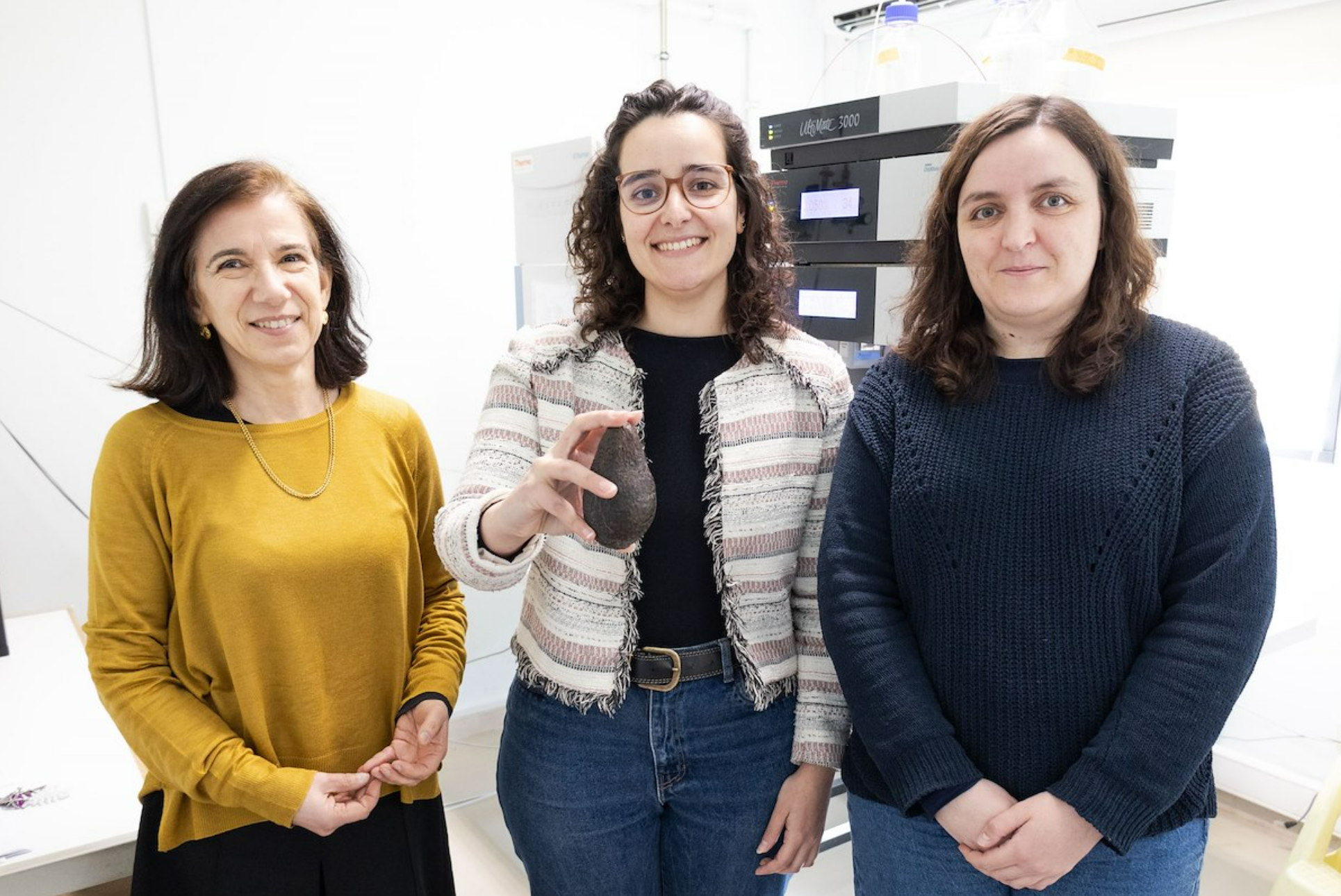The peel and seed of the avocado contain valuable bioactive compounds, offering a sustainable alternative with health benefits and potential applications across various industrial sectors. This finding comes from a team of researchers at the University of Aveiro (UA) who, in a second phase of the project, aim to promote the more sustainable use of avocado waste by transforming it into high-value ingredients for use in the food, cosmetic, and nutraceutical industries.
The research results revealed that the by-products of the Hass avocado, the most widely produced and consumed variety globally, particularly its peel, are rich in biomolecules with antioxidant and anti-inflammatory properties. “Among the most relevant biomolecules are fats such as essential omega-3 and omega-6 fatty acids, as well as more complex lipids that carry these fatty acids,” explains Bruna Neves, a researcher at the Lipidomics Laboratory of the Department of Chemistry at UA. She co-authored the study with fellow researcher Tânia Melo and Professor Maria Rosário Domingues.
For the first time, lipids rich in essential omega-3 and omega-6 fatty acids have been identified in Hass avocados. Interestingly, Neves notes, “the avocado peel contains a higher amount of omega-3 fats, while the seed is predominantly rich in omega-6 fatty acids.” Furthermore, “these by-products are also rich in oleic acid, just like olive oil, making these fats particularly beneficial for health.”

Thanks to their antioxidant and anti-inflammatory properties and their richness in omega-3, -6, and -9 fats, Bruna Neves emphasizes that “avocado peel and seed may help prevent cardiovascular and neurodegenerative diseases, thereby supporting heart and brain health and reducing premature aging, while also benefiting skin health.”
The Lipidomics Laboratory team at UA highlights that avocado peel and seed are excellent candidates for use as sources of nutritional and bioactive ingredients in both food and cosmetic products.
“These by-products can serve as sources of natural antioxidants, replacing synthetic ones, and thus extending shelf life and improving oxidative stability in food items, creams, and natural cosmetics,” the researchers add.
Additionally, the peel and seed can be used as emulsifier sources, contributing to the development of more eco-friendly foods and cosmetics. They can also be used as sources of value-added compounds in various formulations (oils, capsules, or ampoules), delivering active ingredients that enhance the nutritional and nutraceutical properties of products. As Neves points out, “by reusing these by-products, we not only reduce waste and support the environment, but we also promote a circular and sustainable economy, taking full advantage of what the avocado has to offer.”
This research presents findings from one of the research lines of Bruna Neves’ PhD project, titled “Valorization of Portuguese AVOcado as a source of high added-value BIoactive lipids using OMICS-based approaches.”
Original source: Notícias UA, April 8, 2025
